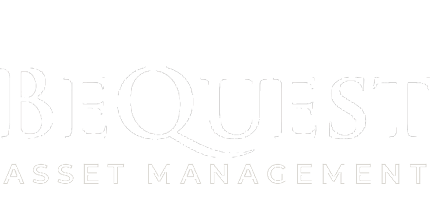Market volatility has represented an ever-growing challenge for investors, making it increasingly difficult to predict market moves. Such an environment has led to a time of great uncertainty and even fear. However, many billionaire investors have remained committed to strategies that give them confidence regardless of the current economic environment.
Having faced numerous challenges throughout their careers, including economic downturns, market crashes and geopolitical events, they have also experienced significant success. Over time, these titans of industry have set themselves up for success, regardless of any uncertainties in the market.
Shawn Muneio, one of the managing partners at Bequest, attended an exclusive event with 26 influential leaders within the investment world to discuss investment philosophies and strategies critical to thriving during times of uncertainty. These philosophies were structured into four components, which are synthetized and shared in this article below:
Four Key Strategies to Thrive

The first strategy is not to lose money on your investments; also considered to be the Golden Rule, it was penned by Warren Buffet, and although easy to say and difficult to do, it stands for a mindset of balancing risk and reward. For example, if you lose half of your investment, it may take 10 to 15 years to return your original investment.
Therefore, a decision to invest should be made with thorough diligence, considering the impact it has in the long term. Only invest in what you are comfortable with; take your time to understand the industry and the assets. This can broken down into 3 steps: (step 1) take time to truly understand the investment, (step 2) evaluate the risks, and do so within the context of the current investment environment, and then (step 3) consider the potential returns. Develop your own due diligence approach with each investment opportunity. Gone are the days of relying on third party validation, much of the assumptions may no longer be viable given how quickly the market has evolved.

The second strategy is to seek asymmetrical opportunities. Asymmetrical returns refer to investments that have a greater upside than downside potential, having a greater potential gain than loss. Some examples of asymmetrical investment strategies are option trading, successful startups (venture capitalism) or stop-loss orders for equities or other securities. Interestingly enough, these ultra-high net worth investors tend to gravitate more towards alternative investments, which are in tandem with the philosophy of seeking asymmetrical returns. Some further examples of these alternative asset classes include:
Private equity investments. These are asymmetrical through a clear competitive advantage that no one else can do, of which you have a strong understanding of the opportunity, therefore maximizing the upside potential while limiting the downside.
Real estate investments. This asset class has historically delivered asymmetric returns given the quality of the asset, capital appreciation, and consistent deliver of above market returns.
Energy investments. This sector has an asymmetrical risk-reward profile due to the potential for significant price volatility and the cyclical nature of the industry. Production costs set the floor price and capital return creates the downside risk, which adjusts over time. Timing within this sector is critical to maximize the asymmetrical opportunity.

The third strategy is related to navigating investments while staying tax efficient. Prosperous investors do not just evaluate the rate of return, but also the yield after tax. Investors should assess the tax percentage paid to the IRS for an asset class and determine if it is compatible with their investment goals. A couple of key strategies that these investors utilize are:
- Utilizing a tax-efficient source of funds, more specifically a tax-advantage account such as an IRA, 401(k), Roth IRA.
- Tax efficient investments: for instance, municipal bonds are exempt from federal taxes and may also be from state and local taxes.
- Investments with significant tax advantages such as oil and gas, with large tax deductions in the early years of an investment.

The fourth strategy is diversifying through building a portfolio of non-correlated assets. These are investments that move independently from one another. For instance, real estate, gold, agriculture, and fine art tend to be non-correlated to the public stock market. As a result, having a portfolio of non-correlated assets leads to greater diversification.
In fact, billionaire investor Ray Dalio recommends allocating from 10 to 15 non-correlated assets to reduce risk within a portfolio by 80%. He goes on by stating adding just one non-correlated asset within your portfolio may reduce your risk by almost one third.
Do keep in mind that correlation may alter with time, which is another key lesson to consider. For example, 30 years ago the US vs. the rest of the world was not as correlated as it is today, given the evolution of globalization. Today, the correlation across the globe is much stronger. Therefore, these high net wealth investors are actively engaged in the decisions about their portfolio, ensuring their asset allocation is not correlated with today’s market and with the future in mind.
To conclude, despite the hardships that investors are facing these past few years, there are key strategies that we all can consider from these successful investors. These philosophies are neither entirely novel nor exclusive but they are something we can all act on today to weather any economic storm.
For more information or a review of our presentation of these philosophies, visit:



